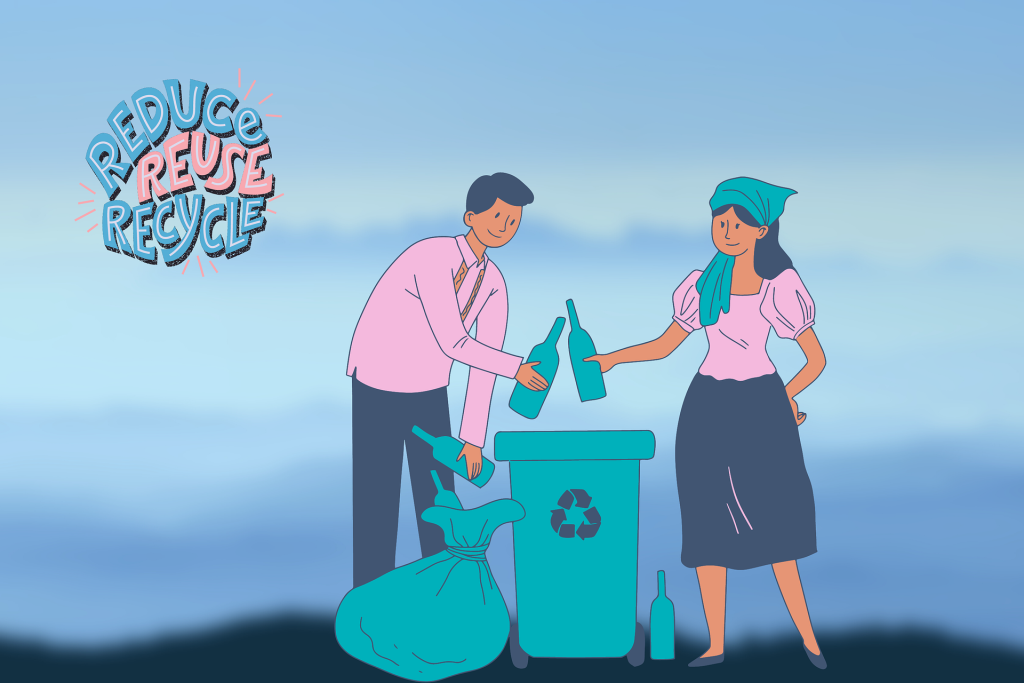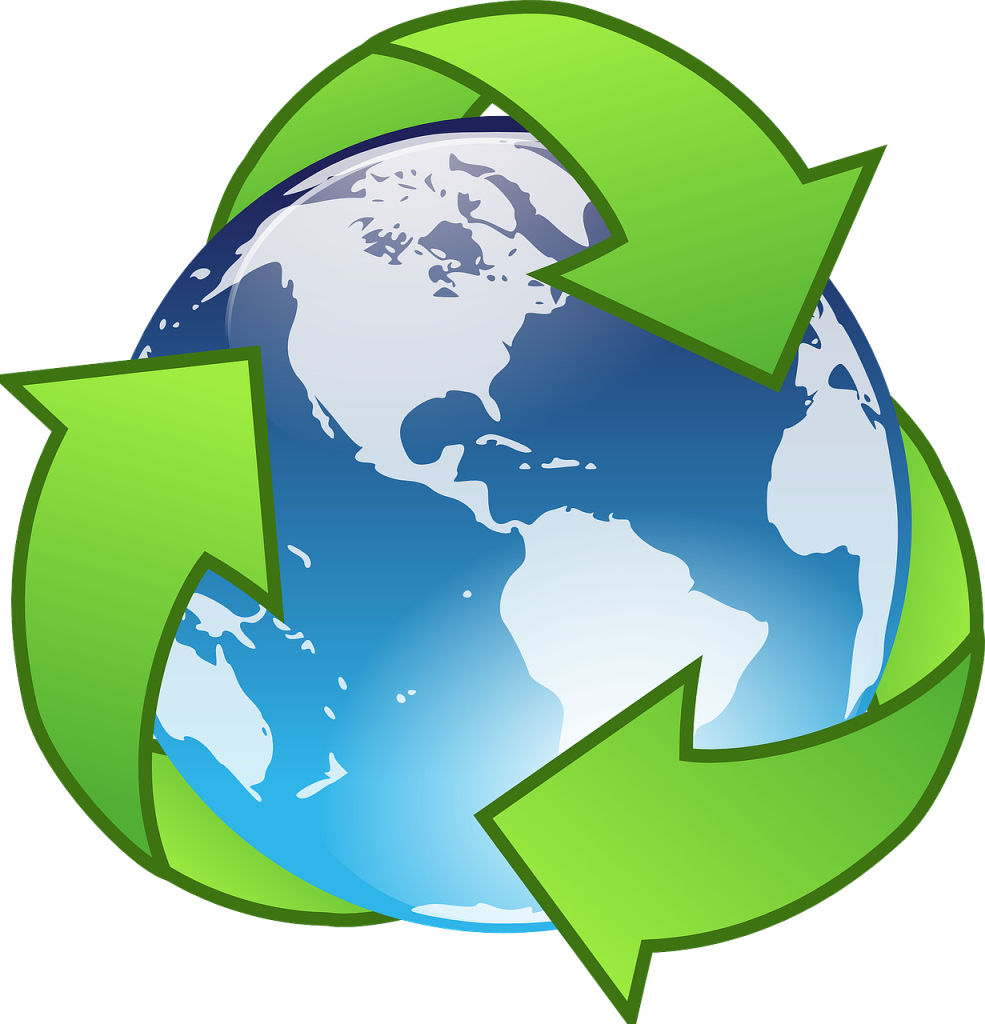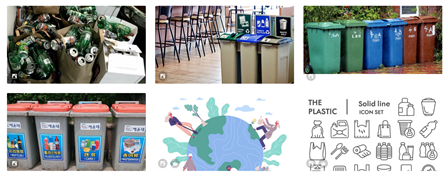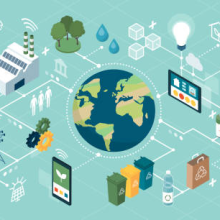Recycling as a Sustainable Living: the pro and con
Recycling is the process of making new products from materials that would otherwise be thrown away as trash.
For the past few decades, we have been throwing away our waste without thinking of sustainable living. The waste we create is not just a problem for us but also for the environment.
Recycling becomes necessary due to the increased demand for products which has led to the majority of deforestation and wildlife exploitation.
The vulnerable people living near ecosystems and natural resources are becoming increasingly displaced or exploited.
Forests are being destroyed for cheap timber, causing communities to be forced out and rivers are being polluted
It’s always better to recycle the products we have than search for new raw materials. Doing so is more sustainable, protects communities and land from environmental damage, and you’ll be doing your part to keep the planet green!
This suggests that recycling materials are better than mining for more raw goods because it’s less likely to negatively impact surrounding environments and communities.
Thus, recycling is an important part of sustainable living
This article explores the concept of recycling as a way of sustainable living. The pro and con recycling process is also examined.
What is Recycling & How Does it Actually Work?

So what exactly does recycling entail?
To recycle something means to reuse it in order to reduce its environmental impact. We usually do this by breaking down recyclables into raw materials and then using them to make new products like paper or plastic containers.
Recycling is a process of converting waste materials into new products or materials. It is the process of extracting and processing recyclable materials from the waste stream to make new products.
This process is done to reduce the amount of waste that goes to landfills and incinerators.
Recycling is a sustainable way of living and helps save the environment because we can use what was previously thrown away to make environmentally friendly products.
Is recycling the same as conserving?
No, recycling is not the same as conserving because it is not responsible for preventing waste from entering landfills.
The recycling process is a two-step process: First, items are sorted into different categories to determine what can be recycled and what cannot. Second, recyclable items are processed and turned into new products.
The recycling process can be done in two ways: mechanical recycling, and chemical recycling.
Mechanical recycling is the process of breaking down material into smaller pieces and then using them to create new products.
Chemical recycling is the process of breaking down material into smaller pieces and then using them to create new products.
The most common recyclable items are paper, glass, plastic, and aluminum. Items that cannot be recycled include things such as food scraps and batteries due to the risk of contamination.
Recycling is an important part of sustainable living and waste management.
Recycling can help us reduce the amount of trash that we put into landfills, reduce our carbon footprint, and conserve natural resources like metal, glass, and paper.
One way to reduce your carbon footprint and combat climate change is through recycling and sustainable living. This can be achieved by changing their daily routine and taking care of their personal needs.
Four primary functions of Recycling
As the world keeps evolving, we are generating more and more waste, and this will only increase over the next few decades.
According to the world bank, the amount of waste generated per person is expected to increase by 19% in high-income countries by 2050, whereas it’s estimated to be much higher for low and middle-income countries.

On average, there is a positive correlation between wealth and waste generation. Using intelligent technology to effectively manage waste in a sustainable way will be critical in future years.
Basically, the four primary functions of recycling are:
- Reduction in waste production: Recycling reduces the amount of solid waste that needs to be disposed of in landfills and incineration plants. This in turn reduces the need for new raw materials and energy resources.
- Increased economic value: Reusing items that have been discarded or are no longer wanted. Recycling can create a higher economic value than using raw materials due to its reusability and durability.
- Reduced environmental impact: Recycling reduces air pollution from incinerators, land pollution from landfills, and water pollution from wastewater discharges. It Keeps valuable material out of landfills and away from incinerators, where they would release toxic fumes into the air.
- Conservation of natural resources: Recycling preserves natural resources by reducing demand for raw material extraction (e.g., mining), manufacturing processes, transportation, and disposal operations. Thus, it reduces the demand for raw materials such as metal, glass, plastic, paper, and cardboard — which can be scarce in some parts of the world.
Advantages of Recycling
Recycling is a process of converting waste materials into new materials and objects. This process is done to lower the amount of waste we produce and save our planet from environmental damage.
There are many benefits of recycling, some are economic, environmental, societal and personal. Let’s discuss some advantages of recycling:
Economic
Recycling is beneficial for the economy because it generates jobs and saves money
The recycling process has been around for a long time. People have been collecting recyclable items for sale and recycling them for centuries.
Recycling is an economically beneficial activity because it reduces the amount of trash going into landfills, saves money, and generates jobs. It’s a process that has saved money and generated jobs over the years.
Recycling is not just a way to save the environment. It is also a way to generate jobs, save money and reduce our carbon footprint.
Recycling is beneficial for the economy because it generates jobs and saves money. The recycling industry employs about 2 million people in the United States alone and recycling helps create more than 4 million jobs across the globe.
Recycling generates more jobs than manufacturing new products. In the United States, recycling creates 5.6 million jobs while manufacturing only creates 3.7 million jobs.

The recycling of products also saves money because it prevents companies from producing new materials and energy that would otherwise be wasted.
For example, every ton of recycled paper saves 23 tons of trees and 58 cubic meters of landfill space per ton. Paper accounts for 16% of the total waste stream in the United States, so reducing paper consumption by just 20 % would have a significant impact on the amount of trash in landfills.
Recycling can help you save money on energy and transportation costs. It is only natural that recycling becomes profitable.
It is important to note that recycling can be profitable. You can often find items to sell or trade on sites like eBay. You can also sell your items to recycling centers, which will give you cold hard cash in return for your recyclable goods.
Environmental
Environmental protection has been a major concern in recent years. And with more and more people becoming aware of the importance of recycling.

Recycling is a way of reducing the use of raw materials, saving energy and water, and preserving natural resources. It also reduces air pollution, conserves landfill space, and reduces the need for waste disposal.
Thus, recycling as a process of converting old or waste materials into new products helps in reducing air pollution and greenhouse gas emissions. Recycling helps in reducing air pollution and greenhouse gas emissions.
Recycling is a great way to reduce waste in our communities and help make our planet greener. It reduces the need for new raw materials, conserves natural resources, and saves landfill space.
With all these benefits, it is no wonder why recycling has become a profitable business for many companies.
Societal
Recycling has many advantages for society. It reduces the amount of waste in landfills, it reduces greenhouse gas emissions.

The recycling process is a profitable business. The recycled materials are used to make new products and this leads to a reduction of waste in landfills, which is good for the environment and society by extension.
Recycling also creates jobs and encourages innovation that can lead to new products that we need in our society. This helps in reducing poverty in society by providing people with a source of income.
It is even profitable in some cases and also provides jobs in the recycling industry.
Personal
Recycling makes you feel good about yourself because you’re doing something good for your environment.
Recycling keeps trash out of our landfills where it will cost a lot of money to get rid of. Recycling saves trees because we can use wood for other things like fence posts.
Recycling makes you feel good because we get to reuse something that would have been thrown away in what some people call “the trash”. It is also good for our environment and costs less in the long run.

Moreover, saving trees is important because they are the natural resources that help provide oxygen and give us food like fruits and vegetables. Recycling is more cost-effective because it saves money on landfills that need to be cleaned up.
Disadvantages of Recycling
Recycling as a process of converting waste materials into new products also has some disadvantages. The process can be costly, and time-consuming. It can generate more waste than it saves, and it is often difficult to find a recycling center nearby or find markets for recycled items.
For example, it takes a lot of energy for recyclers to break down these materials, as well as time and space for storing them until they are ready for their next use.
It also takes time for recyclers to find buyers who will buy their recycled product at a price they can afford, which means they need money upfront that they may not have.
Moreover, recycling can also be a source of pollution, as many of the materials are often contaminated with chemicals or metals. There is also a risk that recycling may introduce other contaminants into the supply chain, as well as to the recyclers themselves.
Another disadvantage of reusing is that it takes up space and needs to be maintained by its owner in order for it to be appropriate for reuse. It can also require upkeep, such as cleaning or repairing before reusing again.
Why You Should Consider Recycling & The Steps It Requires
According to the world bank, the world produces over 2 billion tonnes of urban solid waste per year, of which at least 33% is not disposed of in an environmentally-safe manner.
The average person generates 74 kilograms of waste every year and a significant amount of that ends up in the environment.
Although they account for only 16% of the world’s population, high-income countries contribute 34% of 683 million tonnes of waste in the world.
As a society, we need to do more to secure environmentally safe methods.
Recycling is a necessary measure to protect the environment. It is also a way to save money in the long term.

Some people may think that recycling is too expensive, but it’s not true. The costs of recycling are actually lower than the cost of producing new products from raw materials.
There are many steps involved in recycling. This involves finding a recycling center near you and contacting them to see if they will accept your items for free or at a low cost.
Though several benefits of recycling have been highlighted above, however, it can often seem like an overwhelming process.
We’ve outlined some of the steps below so that you can start thinking about how you might recycle in your own life.
The recycling process can be broken down into three steps: collection, sorting, and processing.
Collection
The first step is taking inventory of what you have at home and what might be recyclable around your community.

This includes things like:
- Old newspapers
- Empty food containers
- Scrap metal
- Glass bottles
- Plastic bottles
- Cardboard boxes
- Electronics (such as cell phones)
- Clothing (such as shoes)
- Furniture (such as chairs)
- Paper goods
- Printer cartridges and ink cartridges
- Batteries, light bulbs, and
- Any other recyclable materials you can think of
Sorting
Determine What Goes Where.
These materials are then sorted so that they can be processed separately. For example, paper goes in the recycling bin as does plastic.
Wood is not recyclable unless it’s been cut up into smaller pieces. And food scraps go in the compost bin or in your garden instead of the trash can.
Processing
The final step is to process these materials into new products like aluminum cans that can be reused as food containers or car tires that will become new car tires for a different car.
Conclusion: Is it Worth the Effort?
The recycling industry is a growing business. Looking to the future, it is expected that global waste will grow to 3.40 billion tonnes by 2050, roughly double the population growth over this same period.
The correlation between generated waste and income level is quite positive.
The recycling business has gone through many changes over the years, but the most significant change has been the increased demand for recycled products.
There are many environmental benefits to recycling. It reduces the amount of waste that goes into landfills, reduces the amount of energy used to create new products from raw materials, and it helps people conserve natural resources.
In this article, we have explored some of the benefits and challenges of recycling in terms of sustainability. We hope that this has helped you understand more about recycling and consider ways in which you can help reduce your own impact on the environment.


